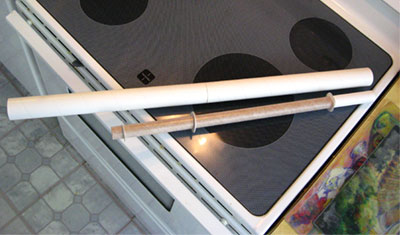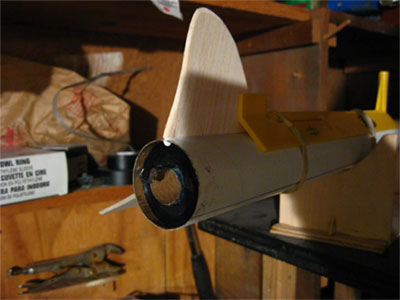Had to get cracking on it, only one flight-ready rocket left in the fleet.
One that I'm building has a large, BT60 diameter tube and is long, a bit over three feet. I worried that the parachute wouldn't open because the chamber the recover charge is going off in is too big. This would cause the rocket to go ballistic, which is bad.

So I made an interior tube extending from the motor mount to the upper section of tube a few inches from the nose cone. This still leaves plenty of room to pack a parachute but reduces the inside volume of the tube to a known safe level.

Plus, the double hull ads weight. This is a bad idea if you're wanting to achieve maximum altitude. Also, as I learned with Queen Izen, if you're too heavy relative to the rocket motor, the rocket hits the ground before the recovery charge blows. If you're launching on, say, a C6-5, that C6 has to be enough total impulse that it will take more than the five seconds that last number indicates for the rocket to fall back down to earth. This rocket is probably pushing the envelope on that front, and I'll probably do its first launch with a C6-3, which will give me the most altitude I'm going to get within the motor size it will support, and the shortest delay.
Well, there is a C6-0, which is no delay, but that's meant to be a booster. I'm not sure if it fires a recovery charge at all, it may just burn up to it's top to air start the engine above it, and be pushed away from the vehicle by the second stage. Not sure on that, since I haven't done any two stage rockets.
Not because they're complicated, I like complicated. But I love it when I get my rockets back and can launch them again and again. And the bigger, heavier birds I've flown have the best track record on that front. Bigger means easier to spot from 1,000 feet below; it means a faster descent under canopy (and so less risk of drifting out of sight and past tree lines or into rock quarries). Plus, the relatively slower take-off is more dramatic. Little rockets are fun, don't get me wrong, but they tend to be a FFFFfffft! Where'd it go? experience.

No comments:
Post a Comment